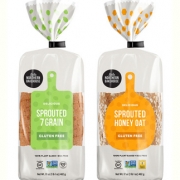Let’s Celebrate Health Canada’s Position on Gluten-Free Claims
Did you know that Health Canada includes the words ‘celiac disease’ and ‘gluten intolerance’ its definition of ‘gluten-free?’
Health Canada’s Position on Gluten-Free Claims (June 2012) has been specially crafted to protect the health and well being of consumers with our condition, based upon the best available medical evidence. Be empowered and proud of the efforts of countless volunteers with the Canadian Celiac Association and its Professional Advisory Council for advocating on behalf of our collective safety. Thank you to the Canadian Food Inspection Agency (CFIA) for undertaking to ensure that Health Canada’s regulations are being followed.
If you have a question or concern about restaurant and food service conditions; grocery store or retail food conditions; safety or quality of a food product and/or food labeling, contact the CFIA.

Table of Contents
- Background
- Regulatory Requirements for Gluten-Free Foods
- Recent advances in the knowledge base about gluten intolerance and Celiac disease
- Update on Health Canada’s Position Related to the use of Gluten-Free Claims
- Related Guidance on Gluten Detection Methodologies
- Additional Information
- References
- (PDF Version – 499 K)
Background
Regulatory Requirements for Gluten-Free Foods
- in whom a physical or physiological condition exists as a result of a disease, disorder or injury; or
- for whom a particular effect, including but not limited to weight loss, is to be obtained by a controlled intake of foods.
(ii) oats,
(iii) rye,
(iv) triticale, or
(v) wheat, kamut or spelt; or
Recent advances in the knowledge base about gluten intolerance and Celiac disease
Update on Health Canada’s Position Related to the use of Gluten-Free Claims
- Based on the available scientific evidence, Health Canada considers that gluten-free foods, prepared under good manufacturing practices, which contain levels of gluten not exceeding 20 ppm as a result of cross-contamination, meet the health and safety intent of B.24.018 when a gluten-free claim is made.
- Based on the enhanced labelling regulations for allergens and gluten sources, any intentionally added gluten sources, even at low levels (e.g. wheat flour as a component in a seasoning mixture which makes up a small proportion of the final food), must be declared either in the list of ingredients or in a “Contains” statement. In these cases, a gluten-free claim would be considered false and misleading.”
- If, however, a manufacturer using a cereal-derived ingredient includes additional processing steps which are demonstrated to be effective in removing gluten, then the food may be represented as gluten-free.
Related Guidance on Gluten Detection Methodologies
Additional Information












